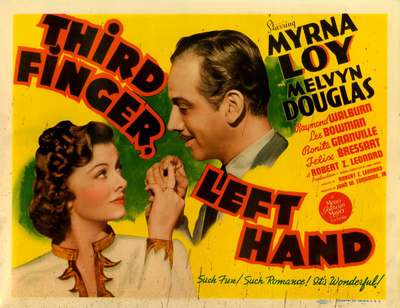In the first couple of pages of her 1987 memoir Being and Becoming, Myrna Loy gets down to business. Talking about the sex lives of Hollywood stars such as herself, she tells us that "any business involving so many beautiful and high-strung people working together on such intense and intimate terms is bound to breed an easy promiscuity. God knows I've fended off my share of amorous men – attractive, desirable men."
She goes on to provide a short list: John Barrymore ("just because he felt like a little redhead now and then didn't incline me to join the club..."), Clark Gable (she shoved him off her back porch one night after he made a pass "and, boy, did he punish me for that!"), Spencer Tracy ("he chased me for years, then sulked adorably when I married someone else...") and Leslie Howard (despite both of them being married he "wanted to whisk me off to the South Seas, and, believe me, that was tempting...").
"These days you're made to feel dull and defensive if you weren't the Whore of Babylon," Loy writes. "Well, succumbing isn't the only interesting aspect of a relationship."
It's no surprise that a woman who understands this much was such a natural in screwball comedies, where succumbing is usually held at bay until the last shot, the better to draw out the difficulties, obstacles and improbabilities set up like an obstacle course along the way.
Of the over 120 films she made, most of the first half of her career – largely bit parts, vamps and "exotics" – is forgotten, her reputation based on the fourteen she made with William Powell (six of which were Thin Man pictures), along with titles like The Best Years of Our Lives, The Bachelor and the Bobby Soxer, Mr. Blandings Builds His Dream House and Cheaper by the Dozen.
If she had a type onscreen – and Loy tried hard to avoid becoming a type – she would become Nora Charles, the paragon of wives: supportive but not obsequious, the equal of any spouse, ready with a wisecrack and a bit of fun, and always beautifully turned out. Quite a stretch, she'd admit, for a woman divorced four times, childless and openly dismissive of her domestic skills.
One film that doesn't get mentioned much in Loy's filmography is Third Finger, Left Hand, a 1940 screwball directed by Robert Z. Leonard, a reliable Hollywood veteran whose career began before World War One, would end up comprising over a hundred films, and produced two Oscar nominations, for The Divorcee (1930) and The Great Ziegfeld (1936). He'd make three films for MGM that year – a good, solid contract director, and barely a footnote today.
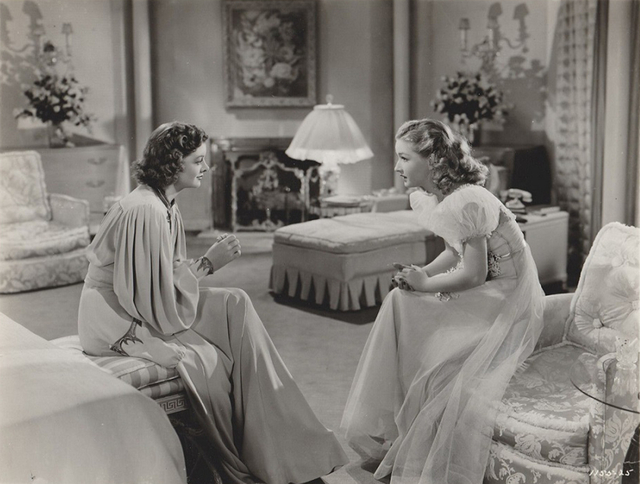
Loy plays a wife – with a twist. The film begins with the camera behind her: Margot Sherwood Merrick is a career woman, the editor of a woman's magazine, and we don't see her face as she gives orders to underlings and reaches for her phone. She's good at her job and enjoys it, and explains to one of her star writers that she wouldn't be able to do it as well if she didn't pretend to be married, to a Mr. Merrick, who she met in Rio, married on a whim, and left there after a week.
Her reason for the lie is obvious when the publisher and his wife drop by her office, and the publisher brazenly flirts with the writer – in front of his wife. The man would have gone after her the same way, she tells her friend after they leave, and his wife would have had her fired in a month if she hadn't cooked up a phony wayward husband traveling the globe.
"They're all alike," Margot explains. "Male ego."
Margot heads to the piers during her lunch to meet a friend arriving in town on a boat from South America, unaware that her friend got off in Havana and that her room was taken by Jeff Thompson (Melvyn Douglas), a struggling artist who has persuaded a powerful gallery owner to come by and look at his work, displayed all around the cabin. Jeff is forced to go away to deal with debarkation paperwork, which puts Margot and Mr. Flandrin, the gallerist, in the cabin at the same time.
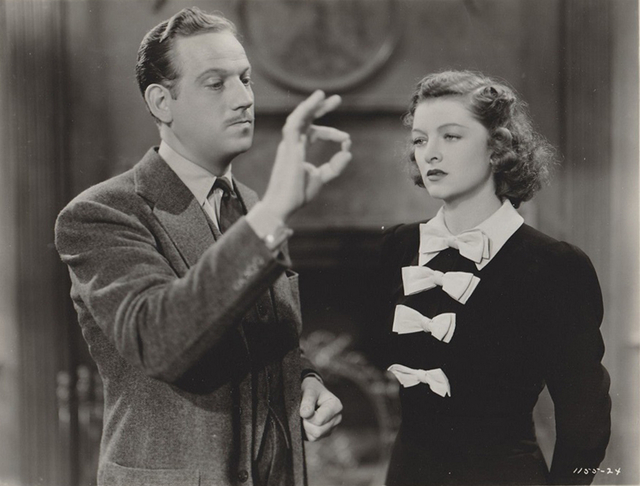
Margot sees the paintings and assumes her friend had taken up art while away on her travels. Flandrin (the always reliable Donald Meek) brusquely orders her around while trying to examine the work. Margot, we know by now, is a woman unused to anything but positive attention from men, and his condescension infuriates her. She berates him and says her friend can do a lot better than show her work with his gallery. It's only as she leaves that she meets Jeff and realizes she's made a mistake; she tries to treat it as a silly joke but Jeff – the second man in a row not immediately charmed by Margot – insists she has to go to Flandrin's gallery and apologize.
You can say that a screwball only starts when a main character tells a lie. Since Margot's first lie began before the first scene, Third Finger, Left Hand is primed from the moment the credits have rolled. Once at the gallery, Margot goes one step beyond an apology by telling Flandrin that Jeff already has a better offer, and gets him to bid up to a smaller commission, a larger advance and his own show. Out on the street, Jeff is starting to change his mind about Margot.
"Looking at your face, nobody'd think you were such a good liar."
In his book Romantic Comedy in Hollywood from Lubitsch to Sturges, James Harvey describes Jeff as a sharp diversion from the usual male-female dynamic in screwballs – Douglas' character is "like many of his predecessors, a kind of free spirit – a painter who knocks around and does what he likes and doesn't worry about getting ahead."
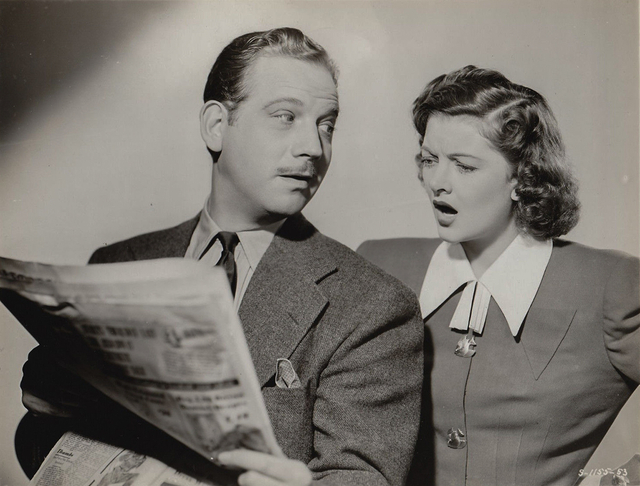
"What he dreams of, though, is not adventure...but early retirement, right back in his home town of Wapakoneta, Ohio. The pictures in his wallet are not of some tootsie but of Mom and Dad. And the girl he is looking for is one he can take home to them. Career woman Myrna Loy hardly qualifies; she is too flip and independent, too much of a city type. And she is too scornful of his certitudes. Doesn't he ever change his mind about anything? she inquires wonderingly. 'Nope,' he replies. 'Well, almost never – nope.' This self-assurance is one of the things about him she has to learn to like."
Much like the film, Melvyn Douglas isn't a name that immediately comes to mind when we think about classic screwball heroes – actors like Fred Astaire, Clark Gable and, most of all, Cary Grant. That is, until you remember him in Ninotchka, This Thing Called Love, That Uncertain Feeling, Two-Faced Woman and as Grant's rival for Loy's affection in Mr. Blandings Builds His Dream House. He was a great physical comedian and in this film palpably enjoys playing drunk and sick and lovelorn.
The big running gag in Third Finger, Left Hand is a "red state vs. blue state" joke, with Douglas firmly agitating for the former while Loy represents the latter. He's the rugged type, happy to bum around with his paints, preferring landscapes to society portraiture and the landscape of the American Midwest to any other.
Wapakoneta, Ohio is a real place – midway between Dayton and Toledo, population just under 10,000 in the 2010 census – and Jeff describes it to Margot as heaven on earth. He's fond of singing and whistling a popular ditty that goes "round on the end and high in the middle – oh, high, oh", and the song insinuates itself into the soundtrack, into the mouths of other characters, and finally issues from a marching band at the climax of the film. You know Margot's relationship with Jeff has reached a turning point when you hear her sing it to herself.
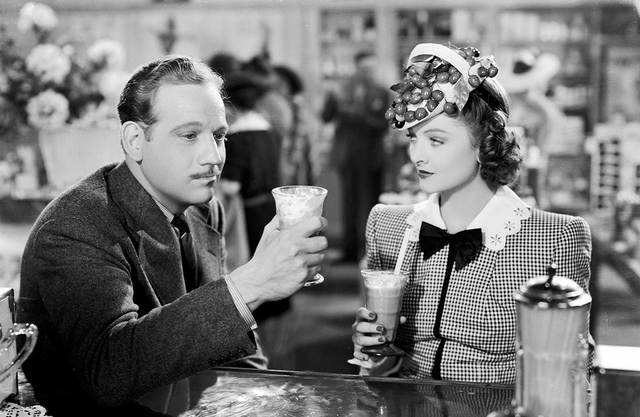
"Round on the End and High in the Middle" was written for a Broadway show in 1922 by Canadian-born songwriter Alfred Bryan, and given lyrics by vaudeville performer Ned Halon. The vocal version had been popularized by the Ohio State University Marching Band the same year the film was made, which might explain why Jeff has it so readily on his lips. His love of his home state is one of the keys to Jeff's character, but to Margot it's just another spot on the vast expanse of what we would know as "flyover country."
"Ever seen Ohio?" he asks her.
"Only from a train window."
Despite – or because – of their rocky introduction, Jeff and Margot are gradually drawn to each other, and he postpones his train back to Wapakoneta to enjoy New York nightlife with her. Unfortunately they run into one of her admirers – on the second or third day of an epic bender after getting his divorce – at a nightclub, where the soused suitor asks about her husband.
Jeff feels betrayed, then incensed, especially after a bit of sleuthing beneath Margot's inconsistent story reveals that no such Mr. Merrick could exist. He decides to pay her back for her deception by pretending to be the wayward Merrick, showing up at her family's estate and introducing himself to her father (Raymond Walburn) and kid sister (Bonita Granville).
Her dad is the sort of upright man of business who wears wing collars at home, while her sister Vicky is a swooning teen romantic, in love with love and eager to accept Jeff as a man moved to mend his ways by the call of true love. Douglas is at his best in these scenes, thrilled by his mischief and by Margot's obvious discomfort.
"Third Finger, Left Hand was a departure for me," Loy wrote in Being and Becoming. "In most of my pictures I complemented the male character, who usually carried the story. This often meant that my roles were subordinate, but that's the way I wanted it. The Bette Davis type of classic woman's role wasn't for me, nor was the Roz Russell female-executive routine, which is what I did in Third Finger, Left Hand."
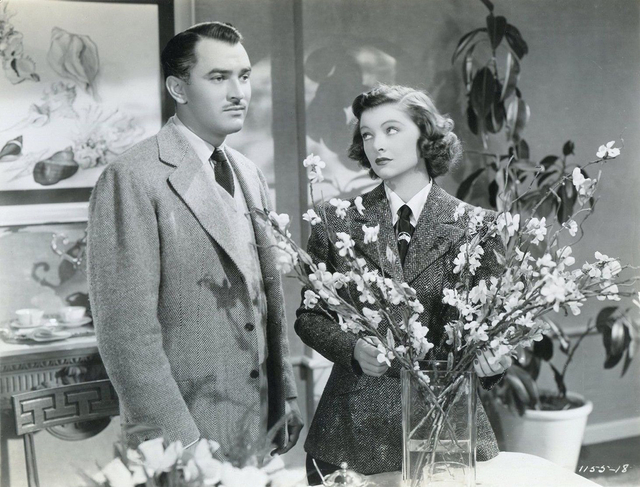
In the classic screwball the heroine is the agent of chaos, but in Third Finger, Left Hand both Douglas and Loy get to play the role in turns. After spending a night on the patio outside his "wife's" bedroom, Jeff gets a cold and tires of his prank. What's more, he's met the hidden third wheel in the relationship – Margot's childhood friend and most persistent suitor Philip (Lee Bowman, in the Ralph Bellamy role), a lawyer who, once he finally grasps the complex situation she's gotten herself into, advises that Jeff and Margot have to actually get married to get divorced so that he can finally marry her – the prize that Margot dangles in front of him as a reward for getting her out of the whole ridiculous situation.
So off they go to Niagara Falls for a quickie wedding. The earnest justice of the peace who presides over the ceremony with his homely children as witnesses shames them with his earnest homily about the sacred and desirable state of matrimony. Killing time by the Falls, they meet another pair of newlyweds – Minnesota Swedes, complete with broad comic accents – who want to share their giddy excitement.
But the coup de grace is when two couples in a tourist group recognize Jeff – they're upstanding citizens of Wapakoneta on vacation, and they're excited to meet Jeff's new wife until Margot decides to adopt the "dese and dose" outerborough accent and slatternly demeanor of a New York floozy to pay back Jeff for his night at her home.
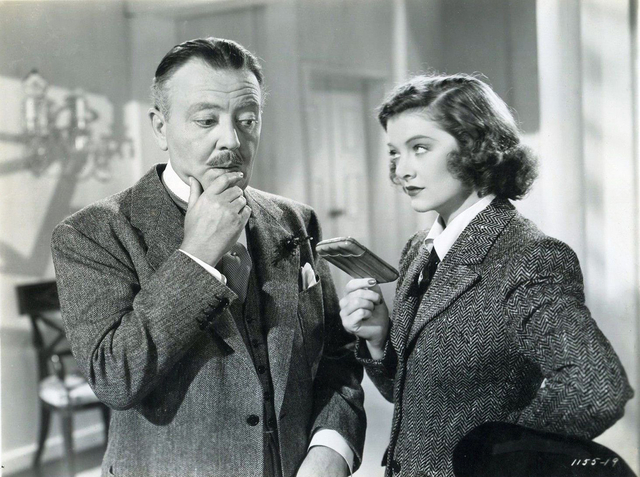
There's not much to say about the final act, set on a train traveling to Reno via Wapakoneta, except for Ernest Whitman as Sam, the porter studying law via correspondence school who Jeff hires to draw out negotiations over the property settlement with Philip, using an avalanche of legal jargon. Whitman was a Tuskegee Institute graduate and ordained minister whose filmography included parts in The Green Pastures, Jesse James, Gone With the Wind, Cabin in the Sky, Stormy Weather and The Lost Weekend.
Black train porters rank somewhere below blackface minstrel shows as wince-inducing commonplaces in Hollywood's golden age pictures. But for some reason Whitman's Sam is allowed to fill out what could have been mere comic relief; he's clearly Philip's match on the law, and when Jeff impersonates Sam to try to draw Margot from her room to say goodbye, the porter suddenly emerges to gently mock Jeff for his mimicry – the stereotype answering back, knowingly and unexpectedly.
You wonder just what moved Leonard and scriptwriter Lionel Houser to push back against a venerable cliché. It's hardly Sidney Poitier in In The Heat of the Night, but Whitman's Sam does a lot with what should have been a little role.
The road from opening credits to final kiss in Third Finger, Left Hand is paved with improbabilities, but it would be churlish and witless to complain about this in a screwball comedy, even a second tier (but undeniably amusing) one like this. Screwball world observes its own logic, and moves to its own quirky physics. There's no reason for Margot and Jeff to go from aversion to lovelorn attraction, and I'm still at a loss to figure out precisely where in the story this watershed moment actually occurs.
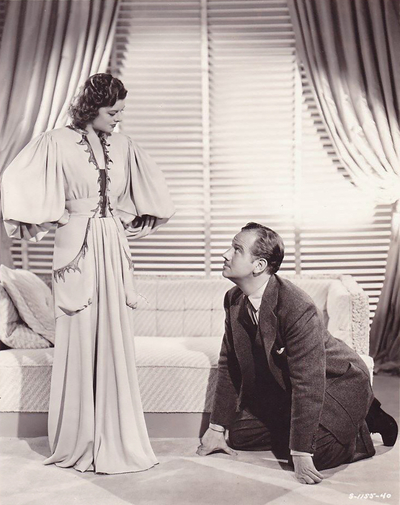
Writing about Loy, James Harvey says that "Loy's glamour on the screen seems always related to meaning held back, diffused, refracted. Her expressiveness, which is considerable, is indirect, light, oddly angled – as Carole Lombard's, for example, never is...She can't, at her best and most characteristic, look anything 'simple'."
Starring alongside William Powell in the Thin Man pictures, "she has his real attention, unmixed and delighted – whether she is sprawling in Asta's wake on a nightclub floor, lecturing him about not getting killed, soothing a gorgonish old aunt...or returning from an unintended visit to Grant's Tomb (where he sent her to get rid of her)."
In other words, the sole and essential reason why Douglas' Jeff is so drawn to Loy's Margot, in spite of his own tastes and inclinations, is that she's Myrna Loy, dammit, and that should be enough for any man.
Mark Steyn Club members can let Rick know what they think by logging in and sharing in the comments below, as access to the comments section is one of many benefits that comes along with membership in the Mark Steyn Club.


